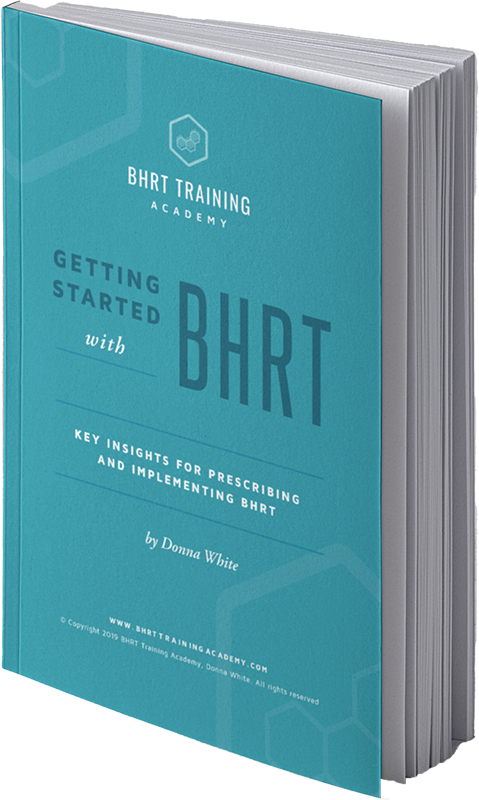Endometriosis

An Integrative Approach to Endometriosis
Endometriosis is a chronic, estrogen-dependent condition characterized by the presence of endometrial-like tissue outside the uterus, leading to significant morbidity, including pelvic pain, dysmenorrhea, and infertility. Affecting an estimated 10% to 15% of reproductive-aged women, its pathogenesis is multifactorial, involving immune dysfunction, hormonal imbalances, genetic predispositions, and environmental influences. This paper aims to provide a detailed overview of endometriosis, emphasizing an integrative approach to management that addresses the complex interplay of factors contributing to the disease.
Pathophysiology
Immune Dysfunction and Inflammation
Endometriosis is increasingly recognized as a disease of immune dysfunction rather than solely a hormonal disorder. The immune system’s failure to clear ectopic endometrial cells allows their implantation and proliferation. This process is exacerbated by an inflammatory environment, which promotes tissue growth and adhesion formation. Key elements include:
- Estrogen Dominance: Estrogen not only stimulates the growth of ectopic endometrial tissue but also modulates immune function, promoting an inflammatory response.
- Progesterone Resistance: Affected tissues in endometriosis show resistance to progesterone, impairing its anti-inflammatory effects and contributing to disease progression.
- Genetic and Epigenetic Factors: Genetic predispositions to immune dysregulation and hormonal imbalances are compounded by epigenetic changes induced by environmental toxins, such as dioxins, which interfere with hormone receptor signaling.
Environmental and Lifestyle Factors
Exposure to environmental endocrine disruptors plays a critical role in the pathogenesis of endometriosis by mimicking or blocking natural hormones and altering genetic expression. Lifestyle factors, including diet and stress, can modulate immune and hormonal functions, influencing the disease’s severity and manifestation.
Clinical Features
Endometriosis presents a spectrum of symptoms, often leading to a delay in diagnosis. Key clinical features include:
- Pelvic Pain: The hallmark of endometriosis, ranging from severe dysmenorrhea to chronic pelvic pain, significantly impacts patients’ quality of life.
- Infertility: Endometriosis is a leading cause of infertility, with the disease affecting the quality of eggs, sperm, or embryo implantation.
- Associated Conditions: Comorbidities such as irritable bowel syndrome (IBS) and interstitial cystitis are common, suggesting a systemic inflammatory process.
- Mental Health Impact: The chronic, often debilitating nature of the disease contributes to high rates of anxiety and depression among sufferers.
Diagnosis
Diagnosis of endometriosis remains challenging, relying on a combination of clinical suspicion, imaging, and surgical intervention. While laparoscopy with biopsy is the gold standard, advancements in non-invasive techniques, such as MRI and ultrasound, offer promise for earlier detection. Research into biomarkers for endometriosis aims to facilitate non-invasive diagnosis and personalized treatment approaches.
Management
Conventional Treatments
- Hormonal Therapies: Aim to suppress ovarian function and reduce estrogen levels, thereby limiting the growth of ectopic endometrial tissue. Options include combined oral contraceptives, progestins, and GnRH agonists. These options don’t address the underlying cause and can often lead to other side effects.
- Surgical Interventions: Laparoscopic excision or ablation of lesions can provide symptom relief and improve fertility outcomes. However, recurrence is common, and surgery carries risks of adhesion formation.
Integrative and Natural Approaches
- Dietary Modifications: Emphasize an anti-inflammatory diet rich in omega-3 fatty acids, antioxidants, and fiber. Eliminate foods that may exacerbate inflammation, such as processed foods, red meat, and dairy. It is essential to eliminate gluten, dairy and any other food sensitivities.
- Supplements: N-acetylcysteine (NAC) has shown promise in reducing cyst size and symptoms. Omega-3 supplements, antioxidants (vitamin E, vitamin C, and selenium), and anti-inflammatory herbs (turmeric, ginger) can modulate immune responses and reduce pain.
- CBD. Cannabidiol (CBD) has emerged as a promising adjunct in managing endometriosis-related pain and inflammation. By interacting with the endocannabinoid system, CBD can modulate pain perception and inflammatory responses, offering symptomatic relief without the psychoactive effects associated with THC.
- High-Dose Progesterone Therapy. High-dose progesterone therapy aims to counteract the effects of estrogen dominance and progesterone resistance observed in endometriosis. By enhancing progesterone’s anti-inflammatory and anti-proliferative effects, this approach can reduce lesion size and alleviate pain. However, the optimal dosing and long-term safety require further investigation.
- Receptor Detoxification. Receptor detoxification focuses on mitigating the impact of environmental toxins on hormone receptor function. Strategies include dietary modifications to reduce toxin exposure, supplementation with compounds that support liver detoxification (e.g., N-acetylcysteine, milk thistle), and the use of natural progesterone to improve receptor sensitivity.
- Herbal Remedies: Plants like Vitex agnus-castus (Chasteberry) may improve hormonal balance, while berberine has antimicrobial and anti-inflammatory properties beneficial for gut health.
- Lifestyle Interventions: Stress reduction techniques, including yoga and meditation, alongside regular physical activity, can improve pain management and overall well-being.
- Acupuncture and Traditional Chinese Medicine: May offer pain relief and hormonal balance through mechanisms that modulate the neuroendocrine system.
Future Directions
The future of endometriosis treatment lies in a better understanding of its pathophysiology, leading to targeted therapies that address the underlying immune and hormonal dysfunctions. Ongoing research into biomarkers and the role of the microbiome in endometriosis holds promise for non-invasive diagnostics and personalized treatment plans.
Conclusion
Endometriosis requires a comprehensive, multidisciplinary approach that encompasses both conventional and integrative strategies. By addressing the underlying pathophysiological mechanisms and incorporating lifestyle and dietary modifications, healthcare providers can offer more effective and personalized care to those affected by this complex condition.
References and Interesting Research
https://www.ncbi.nlm.nih.gov/pmc/articles/PMC3662115/
https://academic.oup.com/edrv/article/40/4/1048/5469279
https://www.nejm.org/doi/10.1056/NEJMra1810764
https://www.tandfonline.com/doi/full/10.1080/09513590.2019.1590546
https://jneuroinflammation.biomedcentral.com/articles/10.1186/s12974-020-01752-1
https://www.mdpi.com/2077-0383/10/22/5397
https://academic.oup.com/humrep/article/28/6/1552/603470
https://www.endofound.org/faq
https://www.ncbi.nlm.nih.gov/pubmed/28303579
https://www.ncbi.nlm.nih.gov/pmc/articles/PMC4340602/
https://www.ncbi.nlm.nih.gov/pubmed/28469404
http://www.nejm.org/doi/full/10.1056/NEJMoa1614814
https://pubmed.ncbi.nlm.nih.gov/20104427/

Get the quick read ebook,
Getting Started with BHRT -
Key Insights to Prescribing and Implementing BHRT.
CME's - Earn while you learn.
